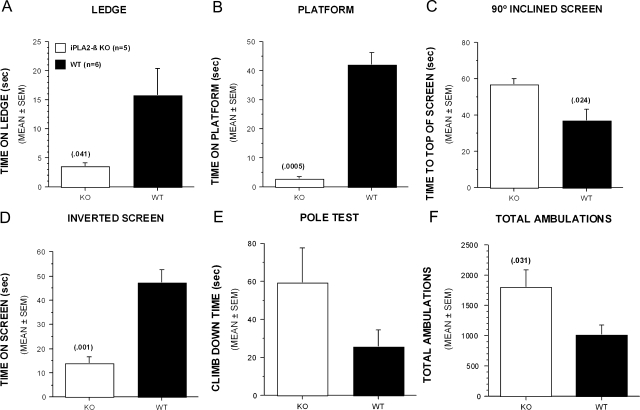Figure 2.
Thirteen-month-old iPLA2β-KO mice are impaired in other sensorimotor tests involving balance, motor co-ordination, and strength, and they exhibited increased general locomotor activity. A and B: KO mice were able to remain on a narrow Plexiglas ledge (A) or a small circular platform (B) for significantly less time than WT littermate controls. C and D: KO mice also took significantly longer to turn and climb to the top of a 90° inclined screen (C) compared to WT littermates and were able to stay upside down on an inverted screen for a significantly shorter period of time compared to WT littermate controls (D). E: Although differences were not statistically significant, KO mice appeared to have greater difficulty in climbing down a vertical pole although their performance was highly variable. F: KO mice displayed significantly increased levels of general locomotor activity when total ambulations (whole body movements) were measured for 1 hour. Bars represent mean values and error bars represent SEM. P values are indicated in parentheses above error bars.

